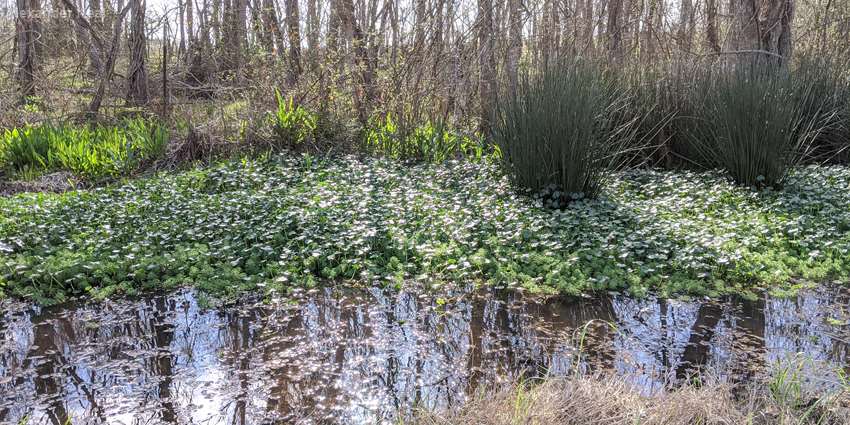Article originally written by Madison Pigg
A functioning riparian area along a low-lying roadway near Cottonwood Creek, Tehuacana Creek watershed, Freestone County, Texas
Most Texans recognize that water bodies provide essential benefits such as drinking water, recreation, irrigation water and ecosystem benefits, but do you know why the areas of land surrounding those water sources are critically important?
“Riparian areas are crucial because they provide a majority of the habitat that exists in and around bodies of water,” said Alexander Neal, a program specialist for the Texas Water Research Institute. Neal’s work primarily consists of programs focused on the health of stream ecosystems and water quality improvement.
A riparian area is the land that can regularly be flooded along creeks, rivers, lakes and marshy coastal areas. It can be naturally occurring or can be artificially made by infrastructure or landscape design.
The Texas Riparian and Stream Ecosystem Education Program is designed to spread awareness about these areas and their importance to our waterway’s ecosystems. Neal helps lead the program, which strives to educate land managers and landowners on ways to rehabilitate and better manage riparian areas and watersheds. This will not only benefit their land but also make creeks and watersheds healthier throughout the state.
The benefits of a healthy riparian area are extensive, he said. The likelihood of flooding decreases substantially in healthy riparian areas, and they also have better-sustained base flows, or the amount of water that the area normally has without runoff or stormwater. Healthy riparian areas also help stabilize downstream reservoir capacity for longer periods of time and stabilize the banks of the creek or stream, making the banks less likely to erode.
These areas can be a large contributor to local economies as well. Streams, rivers, lakes and creeks are all popular recreational areas for people to go to enjoy fishing, paddle boarding, kayaking and recreation.
“Without the health of these areas, ecotourism would cease to be how we know it today,” Neal said.
Unhealthy riparian areas can be identified by spotting bank erosion, or limited or unhealthy wildlife. Riparian erosion is also an issue for landowners because many creeks and streams act as property lines. This can also become a financial issue after years of paying taxes on land that is now part of the water system.
“There are always better ways to manage our riparian areas,” Neal said. “For example, in a lot of urban parks, people mow right up to the edges of the streams. If we just stop mowing up to the water and leave some of the vegetation, there would be vast improvements to these riparian areas.”



